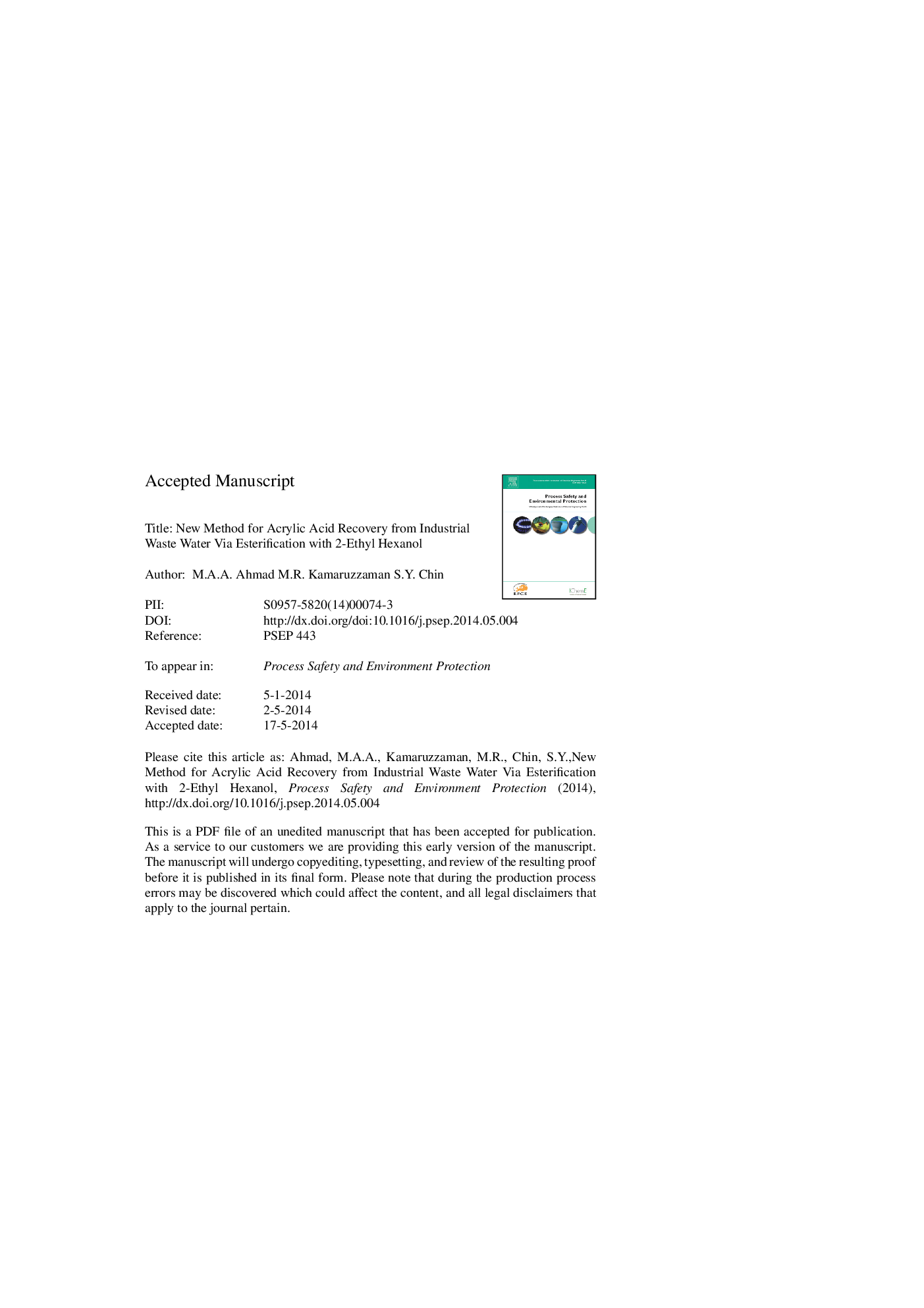| کد مقاله | کد نشریه | سال انتشار | مقاله انگلیسی | نسخه تمام متن |
|---|---|---|---|---|
| 10373897 | 878567 | 2014 | 33 صفحه PDF | دانلود رایگان |
عنوان انگلیسی مقاله ISI
New method for acrylic acid recovery from industrial waste water via esterification with 2-ethyl hexanol
ترجمه فارسی عنوان
روش جدید برای بازیابی اکریلیک اسید از پسماندهای صنعتی از طریق استرینگ با 2-اتیل هگزانول
دانلود مقاله + سفارش ترجمه
دانلود مقاله ISI انگلیسی
رایگان برای ایرانیان
کلمات کلیدی
موضوعات مرتبط
مهندسی و علوم پایه
مهندسی شیمی
بهداشت و امنیت شیمی
چکیده انگلیسی
Acrylic acid (AA) is an important component for the production of acrylate polymer. In a typical acrylic manufacturing unit, waste water contains AA in a range of 4-15Â wt.% contributes to the high values of chemical oxygen demand. Due to the toxicity of AA to the aquatic organism, this wastewater should be treated before it is discharged to the environment. The waste water could be evaporated before sending to the incineration which was neither economic feasible nor environmental friendly. Esterification of wastewater containing carboxylic acid with alcohol could be a promising method to recover the acid by converting it to ester while purifying the wastewater. In the present study, recovery of AA via esterification with 2-ethyl hexanol (2EH) was investigated. The model industrial wastewater with various concentration of AA (10-100% w/w) was reacted with 2EH to produce 2-ethyl hexyl acrylate (2EHA) in the setups with total reflux and continuously water removal. These Amberlyst-15 (ion exchange resin) catalyzed reactions were carried out under the mass transfer resistance free region. The performance of both systems was compared. The yield for the reactions of the AA solutions with the AA concentrations of 30-80% was enhanced significantly when the reactions were carried out using the second setup. The kinetic data of the esterification of dilute AA was well described by the Eley-Rideal (ER) kinetic model incorporated with a correction factor to consider the catalyst fouling effect and pseudo-homogeneous (PH) kinetic model for the AA polymerization. The findings have shown the potential of recovering AA from the waste water stream via esterification. The concentrated AA solutions or larger amount of inhibitor should be adopted to prevent the catalyst fouling by the deposition of poly-acrylic acid on the catalyst surface.
ناشر
Database: Elsevier - ScienceDirect (ساینس دایرکت)
Journal: Process Safety and Environmental Protection - Volume 92, Issue 6, November 2014, Pages 522-531
Journal: Process Safety and Environmental Protection - Volume 92, Issue 6, November 2014, Pages 522-531
نویسندگان
M.A.A. Ahmad, M.R. Kamaruzzaman, S.Y. Chin,
